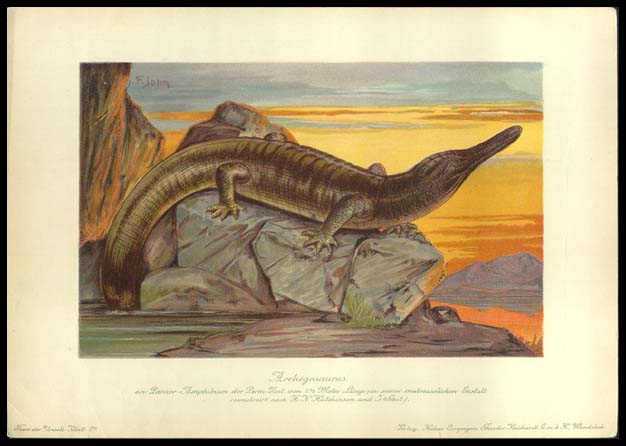[Recent Entries][Archive][Friends][User Info]
Below are 20 entries, after skipping 60 most recent ones in the "Сообщество, посвящённое ра" journal:[<< Previous 20 entries -- Next 20 entries >>]
| October 26th, 2011 | |
|---|---|
| 07:34 pm [industrialterro] [Link] |
Micraroter Micraroter is an extinct genus of microsaur within the family Ostodolepidae. Ostodolepidae is an extinct family of tuditanomorph microsaurs. They are unique among microsaurs in that they were large, reaching lengths of up to 2 feet (61 cm), terrestrial, and presumably fossorial. Ostodolepid remains have been found from Early Permian beds in Texas and Oklahoma. Ostodolepids have elongated trunks, with small, robust limbs and shortened tails. The occiput is high, but the skull narrows toward the snout. The snout is pointed and projects past the jaw. In dorsal view, the skull is roughly triangular. The ventral temporal margin is emarginated. At the back of the skull, there is a large cavity between the supraoccipital and the skull roof. The skull is well ossified, with tight sutures between bones. The skull roof is relatively smooth, although scattered pits and grooves are usually present. There are 32 to 45 presacral vertebrae, and three sacral vertebrae
Tags: Вымершие амфибии, Лабиринтодонты, Лепоспондилы, Пермь |
| 07:19 pm [industrialterro] [Link] |
Melosaurus Мелозавры (Melosauridae) – семейство темноспондилов пермской эпохи. Относятся к надсемейству архегозавроидов, родичи архегозавров и платиопозавров. Отличаются относительно короткой широкой мордой. Череп высокий в задней части, морда относительно плоская. Глазницы направлены вверх. Ноздри крупные. Череп с хорошо выраженным скуловым изгибом и пережимом позади ноздрей. Передние небные ямы парные, с отвесными передними и боковыми стенками. Альвеола последнего зуба предчелюстной кости значительно меньше двух предыдущих альвеол. В парахоанальном зубном ряду сошника до шести зубов. Многочисленные шагреневые зубы на сошниках. Затылочный мыщелок парный. Ушные вырезки крупные. Название («черные ящеры») происходит от цвета породы, вмещавшей первые находки. Для подсемейства Melosaurinae (Melosaurus, Koinia) характерно ложковидное расширение переднего конца черепа, расположение заднего края хоаны впереди переднего края межптеригоидного окна; незагнутый вверх передний конец нижней челюсти с прямолинейной (в плане) симфизной частью; горизонтальная пластина на медиальной стороне зубной кости позади симфиза; массивный околосуставной блок нижней челюсти; симфизные клыки, незначительно превышающие по размерам передние зубы нижней челюсти; крупная радиально-ячеистая и радиально-гребенчатая скульптура на угловой кости. Небные клыки и краевые зубы крупные. Скелет конечностей у некоторых видов относительно массивный, у других – запястье и плюсна в значительной степени хрящевые. Типовой род – мелозавр (Melosaurus). Род описан в 1857 году фон Мейером из медистых песчаников Приуралья (Стерлитамак в Башкирии). Типовой вид рода - M. uralensis. Длина черепа достигала 20 см и более. Внешне животное напоминало небольшого относительно короткомордого крокодила. Другие виды рода могли быть крупнее – например, M. kamaensis имел череп более 40 см длиной. Этот вид отличался более низким широким черепом. Некрупные виды M. platyrhinus и M. compilatus характеризуются относительно короткой мордой и широким черепом. Род коиния (Koinia) с единственным видом K. silantjevi сходен с мелозавром. Все мелозаврины характеризуют голюшерминский субкомплекс очерского комплекса казанского века поздней («средней») перми Приуралья. Эти темноспондилы были водными или полуназемными хищниками, напоминавшими по образу жизни аллигаторов. Желобки боковой линии у этих животных не развиты.
Tags: Вымершие амфибии, Лабиринтодонты, Пермь, Темноспондилы |
| October 25th, 2011 | |
| 08:59 pm [industrialterro] [Link] |
Lysorophus Lysorophus is a genus of Lysorophia, extinct Permian Lepospondyl tetrapods. Most of the specimens are found from North America and attributed to the first formally described species Lysorophus tricarinatus due to the lack of diagnostic characters, but several other species have been described. Lysorophus were small salamander-like amphibians. They lived in fresh water, aestivating in burrows during dry periods. Lysorophia is an order of aquatic Carboniferous and Permian amphibians within the extinct subclass Lepospondyli. Lysorophians resembled small snakes, as their bodies are extremely elongate. There is a single family, the Lysorophidae. Currently there are around five genera included within Lysorophia. The skull is lightly built and open, with large orbits and fenestrae. The intertemporal, supratemporal, postfrontal, and jugal bones of the skull have disappeared. The mandibles are short, and the maxilla and premaxilla freely movable. The torso is very elongate, the limbs diminutive or absent, and the tail short. There are up to 99 pre-sacral (i.e. not including the hips and tail) vertebrae. Based on morphology of the cranio-vertebral articulation, Lysorophids are usually considered to be related to the Microsauria, although the pattern of bones of the skull is very different. Lysorophians are known mainly from the Late Pennsylvanian and Early Permian of North America. In North America, fossils of lysorophians have been found from places such as the Chinle Formation in San Juan County, Utah and the Mazon Creek fossil beds in Grundy County, Illinois. Carboniferous lysorophians are also known from Europe, having been found from England and Ireland. Possible remains of a lysorophian have also been found from La Machine, France, although they may belong to an aïstopod.
Tags: Вымершие амфибии, Лабиринтодонты, Лепоспондилы, Пермь |
| 08:50 pm [industrialterro] [Link] |
Konzhukovia Konzhukovia is an extinct genus of stereospondylomorph temnospondyl amphibian in the family Archegosauridae. The type species is Konzhukovia vetusta. Мелозавры (Melosauridae) – семейство темноспондилов пермской эпохи. Относятся к надсемейству архегозавроидов, родичи архегозавров и платиопозавров. Отличаются относительно короткой широкой мордой. Череп высокий в задней части, морда относительно плоская. Глазницы направлены вверх. Ноздри крупные. Череп с хорошо выраженным скуловым изгибом и пережимом позади ноздрей. Передние небные ямы парные, с отвесными передними и боковыми стенками. Альвеола последнего зуба предчелюстной кости значительно меньше двух предыдущих альвеол. В парахоанальном зубном ряду сошника до шести зубов. Многочисленные шагреневые зубы на сошниках. Затылочный мыщелок парный. Ушные вырезки крупные. Название («черные ящеры») происходит от цвета породы, вмещавшей первые находки. Второе подсемейство – трифозухины (Tryphosuchinae). Их отличает нерасширенный передний конец черепа; расположение заднего края хоаны позади уровня переднего края межптеригоидного окна; загнутый вверх передний конец нижней челюсти с Г-образным изгибом (в плане) симфизной части; узкая зубная кость позади симфиза без горизонтальной пластины; меньшая массивность околосуставного блока нижней челюсти; очень крупные по отношению к передним зубам нижней челюсти симфизные клыки; более мелкая скульптура ячеистого и радиально-ячеистого типа на угловой кости. Наиболее известен род конжуковия (Konzhukovia). Описан Е.Д. Конжуковой как Melosaurus vetustus в 1955 году. Новое название рода введено Ю.М. Губиным в 1991 году. Череп типовой особи длиной 28 см, шириной 16 см, высотой 6 см – это старый экземпляр. Мощные небные «клыки» в передней части черепа, морда низкая, сам череп высокий. Тазовые кости сходны с тазом эриопса. Возможно, это указывает на полуназемный образ жизни.
Tags: Вымершие амфибии, Лабиринтодонты, Лепоспондилы, Пермь |
| 08:20 pm [industrialterro] [Link] |
Gerobatrachus Gerobatrachus, also referred to as a frogamander, is an extinct genus of amphibamid temnospondyl that lived in the Permian period, approximately 290 million years ago, in the area that is now Baylor County, Texas. The animal has been interpreted as a concrete example for the hypothesis offered by many cladistic analyses that frogs and salamanders had a common ancestor, and that they are only distantly related to the third extant order of amphibians, the caecilians. Gerobatrachus has been considered to be the closest relative of Batrachia, the clade that includes modern amphibians. The discovery provides a new setpoint for readjusting the molecular clock of this amphibian lineage, since this new data revises the best estimate of the date when frogs and salamanders separated from each other sometime between 240 and 275 million years ago, much more recently than previous molecular data had suggested, according to Prof. Robert Reisz, University of Toronto at Mississauga, one of the paper's co-authors. The batrachian molecular clock, in other words, is ticking faster than had been thought. The type species, Gerobatrachus hottoni ("Hotton's ancient frog") was described for the first time on May 22, 2008 in the journal Nature. The "frogmander" fossil, as journalists swiftly dubbed it, was collected in the mid-1990s, then rediscovered in the collections of the National Museum of Natural History, Washington DC, in 2004. Comparative biologist Jason Anderson of the University of Calgary led the new analysis of the fossil, claiming he recognized the "froggy salamander-y sort of look" of the fossil. Anderson judges that the animal would have looked like a stubby-tailed salamander with froglike ears and that it "pretty convincingly settles the question [that the] frog and salamander shared origins from the same fossil group." The analysis is not yet complete, though. National Geographic News reported that the Field Museum’s John Bolt, a curator for fossil amphibians and reptiles, cautioned that it is difficult to say for sure whether this creature was itself a common ancestor of the two modern groups, given that there is only one known specimen of Gerobatrachus, and an incomplete one at that. "At this point I would say it is by no means certain that this is representative of a common ancestor to frogs and salamanders, although it might be," Bolt said. Bolt also says, "The most astonishing thing to me about this study is that this animal is far more froglike than I would ever have expected from its age. Nothing this nonprimitive has ever been described from this age. It's just amazing." Gerobatrachus combines features found later in frogs, such as a large space for a tympanic ear— an "ear drum"— and two ankle bones that are fused together, a typical salamander trait. Its backbone and teeth show features common to both frogs and salamanders, with a wide, lightly built skull similar to that of a frog. Канадские учёные объявили о находке древней амфибии, которая миллионы лет назад обитала в тихих водоёмах и ловила мух на территории современного Техаса. По мнению исследователей, новый вид является общим предком двух основных отрядов земноводных – саламандр (хвостатых) и лягушек (бесхвостых). Считается, что проблема «недостающего звена» и отсутствия останков, которые можно было бы отнести к «прародителю» наземных позвоночных, – одна из самых больших загадок эволюции. «Споры о происхождении амфибий возникали ввиду отсутствия переходных форм. Найденные окаменелости закрывают эту брешь», — говорит один из авторов работы Джейсон Андерсон (Jason Anderson) из университета Калгари (University of Calgary). Результаты детального молекулярного изучения и морфологического описания окаменелости Gerobatrachus hottoni опубликованы в журнале Nature. Полученные данные позволяют утверждать, что современные лягушки и саламандры произошли от одного древнейшего класса амфибий – темноспондильных (Temnospondyli). Останки Gerobatrachus помогли, как считают канадские учёные, окончательно разобраться, кто был предком современных амфибий. У ископаемого скелета специфическое строение лодыжки и массивная барабанная перепонка, что характерно для саламандр, а строение черепа – как у лягушек. При этом развитие позвоночника и челюсти занимает в точности промежуточное положение между этими двумя отрядами и даже более примитивными амфибиями. Молекулярный анализ окаменелости, в свою очередь, позволил оценить время, понадобившееся древнему «праземноводному» для разделения на два независимых отряда – это произошло около 240-275 миллионов лет назад. «Это намного позже, чем считалось ранее», — говорит профессор Роберт Рейш (Robert Reisz) из университета Торонто (University of Toronto Mississauga), соавтор работы. На самом деле Gerobatrachus был первоначально обнаружен в Техасе ещё в 1995 году, но по каким-то причинам детального исследования останков не проводилось, и они были заново «открыты» Андерсоном и его группой. Несмотря на неизбежный ажиотаж, который обычно сопровождает находки кандидатов на «недостающее звено», многие биологи-эволюционисты говорят, что не стоит рассматривать такие останки как прямые свидетельства «выхода из моря на сушу». Ведь эволюционные изменения во многих случаях были постепенны, и кто-то из «прародителей» может оказаться не прямым предком, а «дядюшкой» или «племянником». В любом случае, заявляют канадцы, полученные результаты помогут восстановить цепочку эволюции позвоночных.
Tags: Вымершие амфибии, Лабиринтодонты, Пермь, Темноспондилы |
| 08:11 pm [industrialterro] [Link] |
Dvinosaurus Двинозавры (Dvinosaurus) — род пермских темноспондилов. Принадлежат к группе лимнархий, отряду Dvinosauria, подотряду Trimerorhachoidea. Согласно некоторым классификациям, промежуточны между настоящими тримерорахидами и более поздними брахиопоидами (в настоящее время это положение оспаривается). Впервые открыт В.П.Амалицким в 1898 в верхнепермских отложениях, у деревни Новинки, на берегах реки Северная Двина, в честь которой и дано название. Череп короткий, полукруглый, уплощенный, длиной до 20 см. Ноздри широко расставлены, хорошо развиты желобки боковой линии. Сохраняются окостеневшие жаберные дуги (по мнению А. П. Быстрова в отличие от современных земноводных, вероятно, имели 4 пары наружных жабр). В последнее время предполагается, что жабры были внутренними. Скелет слабый, плохо окостеневший. Водные животные, вероятно, неотенические (подобно аксолотлям). Питались, вероятно, мелкой рыбой и беспозвоночными. 4 вида, типовой вид — D. primus, описанный В. П. Амалицким и позднее подробно изучавшийся А. П. Быстровым и П. П. Сушкиным. Руководящие ископаемые поздней перми (татарский ярус) Восточной Европы. Входят в состав северодвинской фауны.
Tags: Вымершие амфибии, Лабиринтодонты, Пермь, Темноспондилы |
| 07:51 pm [industrialterro] [Link] |
Diploceraspis Diploceraspis was a lepospondyl amphibian. It lived in Ohio during the Permian period. It closely resembles Diplocaulus, and is a relative. It generally sports the same features as Diplocaulus.
Tags: Вымершие амфибии, Лабиринтодонты, Лепоспондилы, Пермь |
| October 24th, 2011 | |
| 10:03 pm [industrialterro] [Link] |
Diplocaulus Диплокаулус (Diplocaulus) — вымершее примитивное четвероногое («земноводное») из группы лепоспондилов. Принадлежит к отряду нектридий (Nectridea). Входит в семейство Diplocaulidae (Keraterpetontidae). Наиболее заметный признак — расширенная в виде бумеранга голова. Выросты образованы таблитчатыми и чешуйчатыми костями. Череп очень плоский. Рот маленький, нижняя челюсть не связана с боковыми выростами. Кости неба прирастают к мозговой коробке, развиты ямы между крыловидными костями. Тело плоское, расширенное (почти листовидной формы). Конечности короткие. Хвост описывают как короткий, но на изображениях полного скелета изображают длинным, почти бичевидным. У близкого рода кератерпетон (Keraterpeton) хвост длинный. Назначение выростов черепа остается неясным. По одной из гипотез, это защита от проглатывания более крупными хищниками. Другая теория предполагает использование «бумеранга» как своеобразного крыла для плавания. Плавание, вероятно, осуществлялось с помощью хвоста, хотя иногда высказывается предположение, что диплокаулус и близкие к нему животные плавали, изгибая плоское тело вверх-вниз. Следует отметить, что общая форма тела этих животных скорее всего, соответствует малоподвижному придонному образу жизни. Не исключено, что диплокаулус мог маскироваться под опавшие листья папоротников и птеридоспермов, при условии наличия соответствующей окраски. Род Diplocaulus описан Э. Д. Коупом в 1877 году из ранней перми Техаса. Типовой вид — D. salamandroides, наиболее известен вид D. magnicornis. Размах крыльев черепа последнего вида достигал 34 см, что соответствует общей длине до 1 метра. Примерно 9 видов диплокаулусов известны из позднего карбона — средней перми Северной Америки (Иллинойс, Техас, Оклахома) и Северной Африки. Близкий род Diploceraspis с единственным видом D. burkei описан А. Ромером из ранней перми Огайо.
Репродукции (1, 2, 3, 4, 5, 6, 7, 8, 9, 10, 11, 12, 13):
Ископаемые останки (1, 2, 3, 4, 5):
Tags: Вымершие амфибии, Лабиринтодонты, Лепоспондилы, Пермь |
| 09:58 pm [industrialterro] [Link] |
Dasyceps Dasyceps is an extinct genus of an unusual temnospondyl from Early Permian of England. Дазицепс (Dasyceps) — род выделен Т. Хаксли в 1859 году. Первоначально был описан Ллойдом как Labyrinthodon bucklandi из ранней перми Кенилворта в Англии. Крупное животное с черепом до 29 см длиной. Череп длинный, с заостренной мордой. Срединное отверстие крупное, каплевидное. Орбиты мелкие, в задней части черепа, сильно приподняты над крышей черепа, от орбит отходят гребни вбок и назад на квадратноскуловые кости. Таблитчатые кости широкие, шиповатый орнамент слабо развит. Постпариетальный отросток небольшой. Орнамент из ямок и гребней, шишки на гребнях мелкие. Челюстной сустав позади затылочного. Два вида — типовой (D. bucklandi) из ранней перми Англии и американский D. microphthalmus. Последний был описан Коупом в 1896 году из ранней перми Нью-Мексико как Zatrachys microphthalmus, к роду Dasyceps отнесен Р. Патон в 1975 году. От европейского вида отличается мелкими размерами; слезная кость достигает орбиты.
Tags: Вымершие амфибии, Лабиринтодонты, Пермь, Темноспондилы |
| 09:52 pm [industrialterro] [Link] |
Collidosuchus Collidosuchus is an extinct genus of archegosauroidean temnospondyl within the family Archegosauridae. К архегозавру близок более поздний по возрасту (средняя пермь — казанская эпоха) коллидозух (Collidosuchus tchudinovi). Длина черепа достигала 30 см, от архегозавра коллидозух отличается более широкой мордой. Род входит в состав Очерской фауны.
Tags: Вымершие амфибии, Лабиринтодонты, Пермь, Темноспондилы |
| 09:34 pm [industrialterro] [Link] |
Cheliderpeton Cheliderpeton (often misspelled Chelyderpeton) is an extinct genus of temnospondyl amphibian. It lived during the Early Permian in what is now Europe and Germany. Fossils have been found from the Ruprechtice horizon of the Intrasudetic Basin of Bohemia in the Czech Republic, as well as the Saar-Nahe Basin of southwestern Germany. The type species of Cheliderpeton is C. vranyi, named in 1877 by the Czech paleontologist Antonin Fritsch and found from the Czech Republic. A second species named C. latirostre was described in 1993 by J. A. Boy from Germany, after having been assigned to Archegosaurus. It differs from the type in having a less extensive preorbital region of the skull, a wider cheek region, and a snout tip that is less round and has lateral projections. Currently the two species are the only ones known to belong to Cheliderpeton, although there have been more assigned in the past that are now considered to be synonymous with the known species. "Actinodon germanicus", described by O. Kuhn in 1939 on the basis of a specimen found from the Czech Republic, is now known to be an unusually large individual of C. vranyi, probably in a late stage of ontogenic development. It has been suggested that C. latirostre may belong to a separate genus, either to Archegosaurus or a new one that is yet to be named, due to several differences between it and the type species. These differences include the concave outline of the skull roof, the expanded snout seen in adult individuals (similar to Archegosaurus decheni), and a nasal-maxilla contact in the adult stage. Cheliderpeton is closely related to the genus Intasuchus from the northern pre-Ural region of Russia. Both share similarities in skull shape, as well as a short and expanded dorsal branch of the ilium and a premaxilla-maxilla suture that is anterior to the choana. Fossils of temnospondyls similar in appearance to Cheliderpeton have been found from the Autun Basin and the basin of Bourbon l'Archambault in France. Cheliderpeton may be a member of the family Archegosauridae or the family Intasuchidae. The family Archegosauridae belongs to the superfamily Archegosauroidea, but it is unsure whether Intasuchus, the type species of Intasuchidae, belongs to Archegosauroidea or the family Eryopidae, within the superfamily Eryopoidea. Thus it is unsure whether Cheliderpeton is an eryopoid (and perhaps more specifically an eryopid) or an archegosauroid. Cheliderpeton had previously been placed in the family Actinodontidae along with Actinodon, Syndyodosuchus and Sclerocephalus, but because Actinodon, the type genus of the family, is a junior synonym of the eryopid Onchiodon, the family is now considered polyphyletic. Хелидерпетон (Cheliderpeton), известный также как Chelydosaurus может принадлежать к интазухидам. Этот темноспондил описан А. Фритчем в 1885 году из ранней перми (ассельская – сакмарская эпоха) Чехии. Типовой вид - C. vranyi. Животное очень сходно с интазухом и синдиодозухом. Длина до 120 см. Часто включется в семейство эриопид. Второй вид - C. latirostris – был описан еще в 1845 году Г. Джорданом из ранней перми Германии. И интазух, и хелидерпетон – водные хищники, хотя и без желобков боковой линии, с довольно мощными конечностями. Возможно, питались мелкими водными тетраподами. Неописанные интазухиды известны из пермских отложений Китая.
Tags: Вымершие амфибии, Лабиринтодонты, Пермь, Темноспондилы |
| 09:25 pm [industrialterro] [Link] |
Cardiocephalus Cardiocephalus is an extinct genus of leponspondyl amphibian from the Permian period. Gymnarthridae is an extinct family of tuditanomorph microsaurs. Gymnarthrids are known from Europe and North America and existed from the Late Carboniferous through the Early Permian. Remains have been found from the Czech Republic, Nova Scotia, Illinois, Texas, and Oklahoma. Gymnarthrids are relatively elongate with short limbs. The skulls of gymnarthrids are also small, with a single row of large conical teeth on the margin of the jaw (a feature that distinguishes them from other microsaurs). In some genera, such as Bolterpeton and Cardiocephalus, the teeth are labiolingually compressed. Gymnarthridae was first erected by E. C. Case in 1910 to include the newly described Gymnarthrus. It was placed in a new suborder, Gymnarthria. Case initially considered gymnarthrids to be reptiles, but later recognized them to be amphibians, placing Cardiocephalus in the family. Pariotichus was placed within Gymnarthridae by Alfred Romer after having previously been assigned to the basal eureptilian family Captorhinidae by Edward Drinker Cope.
Tags: Вымершие амфибии, Лабиринтодонты, Лепоспондилы, Пермь |
| 09:09 pm [industrialterro] [Link] |
Cacops Cacops is a genus of dissorophid temnospondyl that is known from the Early Permian of the central United States. It was about 40 centimetres (16 in) long and well adapted to a terrestrial lifestyle, with a heavily built skull, strong legs, a short tail, and a row of armor plates along its back. Compared to other dissorophids, it has an enormous otic notch in the back of the skull enclosed with a bony bar, indicating a large eardrum. Edwin Colbert suggests that perhaps it was a nocturnal animal like modern frogs. Cacops was first named by American paleontoligist Samuel Wendell Williston with the description of the type species C. aspidephorus from Texas in 1910. A second species, C. morrisi, was named from Oklahoma in 2009. Диссорофиды (Dissorophidae) — семейство темноспондилов позднего карбона — перми. Наиболее наземные из всех темноспондилов. Скелет массивный, тело короткое, конечности длинные, сильные. Голова огромная относительно размеров тела. Череп высокий и широкий, огромные глазницы, крупное париетальное отверстие. Огромные ушные вырезки, судя по строению окружающей кости, содержали барабанную перепонку. Затылочный мыщелок парный. Челюстное сочленение на уровне затылочного. Скульптура черепа гребнистая. Края орбит и теменного отверстия окружены костными валиками, что предполагает толстую кожу. У большинства известен дермальный панцирь на спине из парных рядов костных пластин, приросших к остистым отросткам позвонков, у какопса пластины лежали в два слоя (внутренний слой прирастал к позвонкам). Кожа, по-видимому, мягкая, следов чешуи не выявлено. Хвост короткий. Вероятно, прибрежные амфибиотические и полуназемные хищники. Есть свидетельства (следы зубов на костях), что крупные диссорофиды могли питаться и падалью. Не менее 15 родов, из позднего карбона- средней перми Северного полушария. Большинство родов описано из ранней перми Северной Америки. Наиболее известен род какопс (Cacops) с единственным видом C. aspidephorus, описанным С. Виллистоном в 1910 году из ранней перми (клир-форк) Техаса. Скелет часто изображают в литературе. Длина черепа около 20 см, общая длина до 50 см. Виллистон считал какопса ночным животным из-за очень крупных глазниц. Череп слегка удлиненный, высокий, сжатый с боков. Ноздри крупные, сближенные. Огромные ушные вырезки. Есть пре- и постхоанные небные клыки, наружная крыловидная кость без зубов. 21 предкрестцовый позвонок, 2 крестцовых, 21-22 хвостовых. Пластинки спинного панциря соединены друг с другом и с остистыми отростками, слегка шире позвонков.
Tags: Вымершие амфибии, Лабиринтодонты, Пермь, Темноспондилы |
| 08:14 pm [industrialterro] [Link] |
Branchiosaurus Branchiosaurus (Greek for "gill lizard") is a genus of small, lightly built early prehistoric amphibians. Fossils have been discovered in strata dating from the late Pennsylvanian Epoch to the Permian Period. The taxa may be invalid; the material referred to the genus may be juvenile specimens of larger amphibians. This tiny amphibian was very similar to the Rachitomi, differing primarily in size. Other distinguishing characteristics include a cartilaginous, less ossified skeleton and a shorter skull. Clear traces of gills are present in many fossilized samples, hence the name. Originally thought to have vertebrae distinct from rachitomous vertebrae, it was placed in a separate order named Phyllospondyli ("leaf vertebrae"). Later analysis of growth stages showed increasing ossification in larger specimens, which showed that at lest some of the species was the larval stage of much larger rachitomes like Eryops, while others represent paedomorphic species which retained the larval gills in adulthood. Distribution is uncertain, though available fossils come from central Europe, most famous of which are the Permian Niederkirchen Beds around Pfalz, Germany. Бранхиозавр (Branchiosaurus) — представитель вымерших хвостатых амфибий из отряда Stegocephala. Походил на саламандру и имел в длину от 15—120 мм. Череп широкий, спереди закругленный, с большими овальными глазными отверстиями. Род Branchiosaurus распространен в каменноугольных и пермских отложениях. По-видимому личинка лабиринтодонта. Branchiosaurus amblystomus и Pelosaurus laticeps – мелкие «стегоцефалы» из ранней перми Западной Европы – могут быть личинками типового вида онхиодона, хотя не исключено, что это личинки Sclerocephalus.
Схематическое изображение скелета:
Ископаемые останки (1, 2, 3, 4, 5):
Tags: Вымершие амфибии, Лабиринтодонты, Пермь, Темноспондилы |
| 07:57 pm [industrialterro] [Link] |
Batropetes Batropetes is an extinct genus of brachystelechid microbrachomorph. Although it was first classified as a reptile, Batropetes is now known to be a microsaur amphibian. Fossils have been collected from the town of Freital in Saxony, Germany, near the city of Dresden. Additional material has been found from the Saar-Nahe Basin in southwestern Germany. The genus is known to have lived during the Sakmarian stage of the Early Permian (in European lithostratigraphy this is known as the Rotliegend). Batropetes is small and short-bodied for a microsaur. The orbits are large and the skull is short. Batropetes possesses scales on its underside that are similar to those of reptiles. Batropetes is distinguished from Carrolla, another brachystelechid microsaur, by the presence of three cusps on the premaxillary and anterior dentary teeth. In Carrolla, there are only two cusps. Additional diagnostic features seen in Batropetes include a supraoccipital bone that is not fused to the otic capsule, the presence of a retroarticular process (a projection at the back of the lower jaw), and two proximal bones in the tarsus. The first known material now attributed to the genus Batropetes was originally referred to the genus Hyloplesion in 1882. Several specimens from Freital were described under the name Hyloplesion Fritschi as small non-labyrinthodonts. Three years later, the specimens originally referred to as Hyloplesion Fritschi were reassigned by Carl Hermann Credner to the genus Hylonomus under the name Hylonomus fritschia. Newly discovered specimens of other forms from the same locality led Credner to believe that two taxa existed. He named one, an amphibian, Hylonomus geinitzi, and the other, a reptile, Petrobates truncatus. Later preparation of the material examined by Credner through a technique of removing the soft bone from the surrounding matrix mechanically and casting the cavities in liquid latex has revealed more anatomical detail that suggested that three taxa were present in Freital, not two. A specimen previously referred to Petrobates truncatus was first considered by Robert L. Carroll and Pamela Gaskill in 1978 to be a microsaur rather than a reptile. It was considered distinct from Petrobates, then considered a captorhinomorph, based only on the structure of the atlas. Of the three species represented in Frietal, Hylonomus geinitzi, as described by Credner, has since been reassigned to the microsaur genus Saxonerpeton, and Petrobates truncatus was designated as Batropetes truncatus by Carroll and Gaskill in 1971. Carroll and Gaskill still referred to B. truncatus as a captorhinomorph reptile. Carroll and Gaskill described a new microsaur in 1978 from Frietal which they called Brachystelechus fritschi. It was noted that the skull of Brachystelechus bore a striking resemblance to that of Batropetes, which was considered to be unrelated. It differed from Batropetes in that it possessed an internarial bone which was not seen in known specimens of Batropetes. A newly discovered specimen of microsaur from the Saar-Nahe district in southwestern Germany has confirmed that Brachystelechus and Batropetes represent the same species. The characters that previously distinguished the two genera from one another are all found in one specimen, known as SMNS 55884, housed in the Staatliches Museum für Naturkunde Stuttgart. This a complete specimen preserved in ventral view and consisting of a part and counter part. The skull roof was able to be examined by excavating the matrix from the top of the block. Therefore, more anatomical features could be observed in the specimen. The occipital condyle in SMNS 55884 clearly indicates that it is a microsaur rather than a captorhinomorph reptile. The occipital condyle was not noticeable in the specimen of Brachystelechus. An interfrontal bone is seen in material once referred to Brachystelechus but not in any material known from specimens previously attributed to Batropetes. This may be a result of poor preservation, or perhaps intraspecific variation. The parietals of the specimen are wide and the skull is short, both of which are features that associate it with the genera Carrolla and Quasicaecilia, both of which have been found from North America. On the basis of these and other similarities, Carroll, who described the new material in 1991, constructed a new microbrachomorph family called the Brachystelechidae to include Batropetes, Carrolla, and Quasicaecilia.
Tags: Вымершие амфибии, Лабиринтодонты, Лепоспондилы, Пермь |
| October 23rd, 2011 | |
| 03:15 pm [industrialterro] [Link] |
Australerpeton Australerpeton is an extinct genus of archegosauroidean stereospondylomorph temnospondyl within the family Archegosauridae. When first named in 1998, the genus was placed within the new family Australerpetontidae. However, later studies questioned the systematics used in the original description and included the genus within Archegosauridae. A more recent study reassigned Australerpeton to the family Rhinesuchidae within the suborder Stereospondyli based on an earlier evaluation of the family. In the study, the close similarities between Australerpeton and archegosaurids were attributed to convergent evolution as a result of similar semi-aquatic lifestyles. Другим южноамериканским платиопозавром является Australerpeton cosgriffi, из формации Рио до Расто, с юга Бразилии. Его возраст, вероятно, позднепермский. Это некрупное животное, с длиной черепа 40 см. Внешне австралерпетон очень сходен с платиопозавром, у него такое же уплощенное тело и удлиненная морда. Описаны остатки дермальных чешуй брюшной области. Некоторые авторы относят австралерпетона к ринезухиям.
Tags: Вымершие амфибии, Лабиринтодонты, Пермь, Темноспондилы |
| 03:01 pm [industrialterro] [Link] |
Archegosaurus Архегозавр (Archegosaurus) — род раннепермских темноспондилов. Типовой род семейства Archegosauridae, подсемейства Archegosaurinae. Известен из ранней перми (ассельская эпоха) Западной Европы. Основные находки в Германии и Чехии (Богемия). Внешне напоминал небольшого (до 1,5 метров длиной) длинномордого крокодила. Голова составляла примерно ¼ — 1/5 общей длины. Тело удлинённое, хвост длинный, уплощённый с боков. Конечности слабые, передние существенно меньше задних. Хорошо развиты желобки боковой линии. Зубы многочисленные, относительно мелкие, развиты 1—2 пары нёбных «клыков» и небная «шагрень». Хоаны далеко позади заднего края предчелюстных костей. Хвост с мощными гемальными дугами, вероятно, поддерживавшими кожную складку. Кожные покровы с многочисленными чешуйками и даже округлыми мелкими костными пластинками на спине, на брюхе — дермальный панцирь. Известно множество полных скелетов животных всех возрастов — от личинок с наружными жабрами и округлыми черепами до крокодилообразных взрослых. Вероятно, населяли озёра, питались рыбой и мелкими водными тетраподами. Типовой вид — Archegosaurus decheni из ранней перми Германии. Из ранней перми Чехии описан второй вид — мелкий короткомордый A. dyscriton, ранее выделявшийся в род Memonomenos.
Репродукции (1, 2, 3, 4, 5, 6):
Tags: Вымершие амфибии, Лабиринтодонты, Пермь, Темноспондилы |
| 02:56 pm [industrialterro] [Link] |
Anconastes Anconastes is an extinct genus of dissorophoidean euskelian temnospondyl within the family Trematopidae. It is known from several fossils from the Late Carboniferous Cutler Formation of north-central New Mexico in the southwestern United States. Трематопиды (Trematopidae) – семейство раннепермских темноспондилов. Входят в состав надсемейства Dissorophoidea, куда относятся самые наземные из темноспондилов. Трематопиды обладают довольно высоким черепом с удлиненной мордой. Отличия этой группы – наличие крайне удлиненных наружных ноздрей (возможно, это связано с острым обонянием и сохранением воды), наличие удлиненных клыковидных зубов верхней челюсти, присутствие срединной перегородки на сошниках, очень глубокие «ушные» вырезки и ряд других признаков. В отличие от диссорофид, трематопиды лишены мощных кожных окостенений. Тело длиннее, чем у диссорофид, ноги мощные, хвост средней длины. Кисть, вероятно четырехпалая (хотя для рода Acheloma изображали 5 пальцев на кисти). Длина до 60 см. Это относительно малоподвижные наземные хищники. Аконастес (Anconastes) – также мелкий короткомордый трематопид из ранней перми Техаса, иногда рассматривается как синоним рода Acheloma.
Tags: Вымершие амфибии, Лабиринтодонты, Пермь, Темноспондилы |
| 01:28 pm [industrialterro] [Link] |
Sclerocephalus Склероцефал (Sclerocephalus) – вымерший представитель темноспондилов раннепермской эпохи. Относится к группе архегозавроидов. Внешне сходен с эриопоидами, вероятно, конвергентно. Ранее этот род относили к семейству эриопид. Сейчас он чаще выделяется в особое семейство Actinodontidae. Дело в том, что в род Sclerocephalus сейчас включают и род Actinodon. Склероцефал – крупное животное, старые особи типового вида S. haeuseri достигали почти 2 метров в длину. Молодые особи отличались округлой головой, с возрастом морда удлинялась и у старых животных напоминала морду аллигатора. Хвост длинный, мощный, особенно у молодых животных, с возрастом укорачивался. Личиночные и молодые особи имели наружные жабры, с мелкими «зубами» на жаберных дугах, вели сугубо водный образ жизни. Личинки долгое время были известны как Branchiosaurus amblystomus и Pelosaurus laticeps, часто изображаемые в старых книгах по палеонтологии. Взрослые и старые животные могли быть более наземными, вероятнее всего, напоминали по образу жизни крокодилов. Конечности короткие, массивные. Хорошо развит брюшной панцирь из ромбических чешуй, есть также отдельные чешуи на спине и боках. Многочисленные останки молодых особей приурочены к отложениям глубоких озер, в то же время, останки взрослых встречаются в других местах (соответствующих более мелким озерам и болотам). Личинки питались мелкими ракообразными, насекомыми, по мере роста переходили на питание позвоночными (в области желудка одной из молодых особей обнаружены остатки мелких рыб-палеонисков). Взрослые особи питались преимущественно рыбой, описаны также случаи каннибализма (останки молодых особей в брюшной полости взрослых). Известны многочисленные копролиты взрослых особей. Множество экземпляров типового вида обнаружены в раннепермских (ассельских-сакмарских) отложениях юго-западной Германии, в Саарском угольном бассейне. Это отложения так называемого озера Хумберг, занимавшего в ранней перми площадь до 3400 кв.км. Род описан Г. Гольдфуссом в 1847 году. Род Actinodon описан А. Годри в 1866 году из ранней перми Франции. Это крупное земноводное, длиной до 1,5 метров. Череп сходен с черепом склероцефала и с 2000 года актинодона включают в род Sclerocephalus как вид S. frossardi. Вид S. credneri известен из ранней перми Чехии. Другие виды описаны из Баварии и Индии. Синонимом рода являются также Leptorophus и Macromerion.
Ископаемые останки (1, 2, 3, 4, 5):
Tags: Вымершие амфибии, Лабиринтодонты, Пермь, Темноспондилы |
| October 9th, 2011 | |
| 04:47 pm [industrialterro] [Link] |
Ossinodus Ossinodus is an extinct genus of stem tetrapod. Fossils have been found from the Ducabrook Formation in Queensland, Australia dating back to the middle Visean stage of the Early Carboniferous (Mississippian). It was originally placed within the family Whatcheeriidae, but the absence of an intertemporal bone as suggested by a recent reconstruction of the skull based on fragmentary material may prove it to be stemward of all whatcheeriids.
Tags: Ватчирииды, Вымершие амфибии, Карбон, Лабиринтодонты |




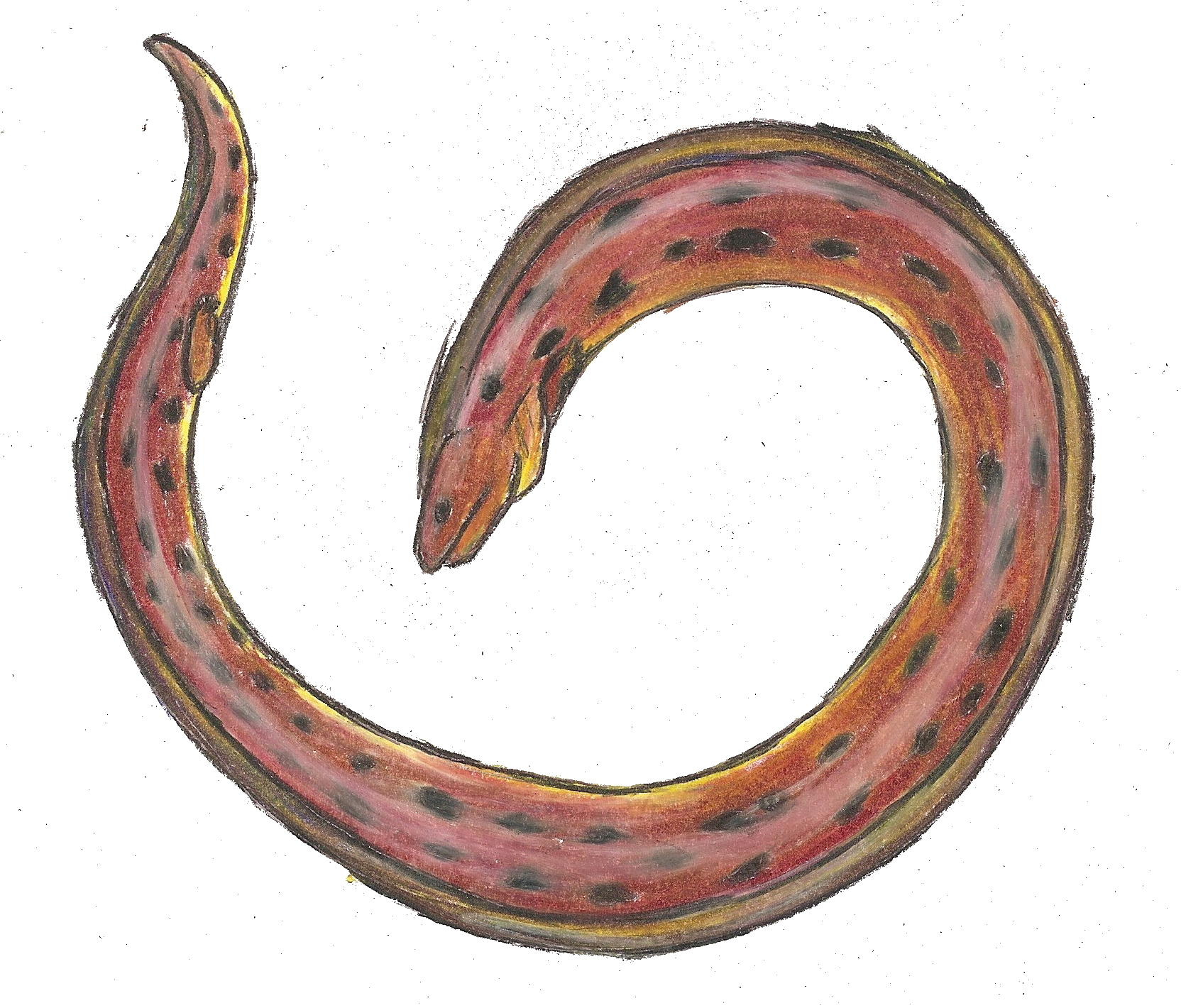
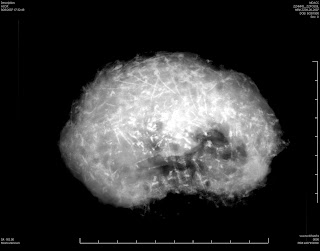












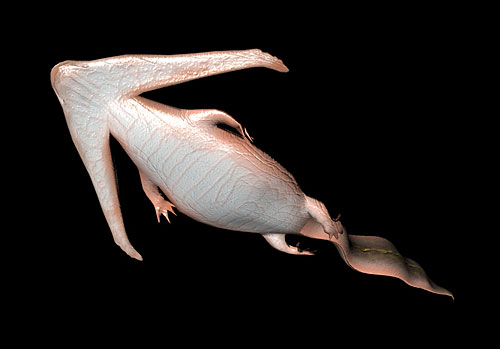

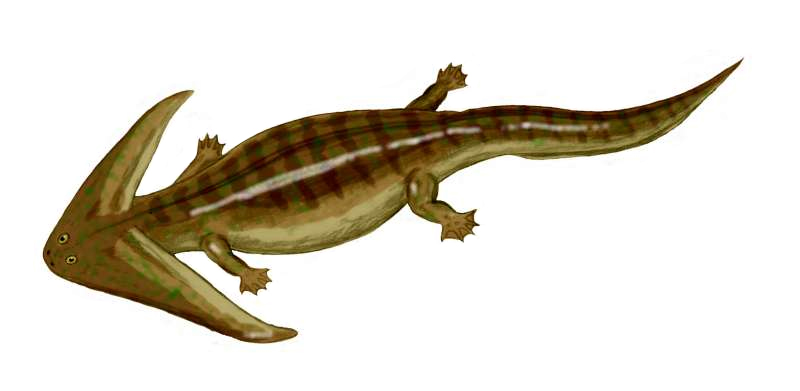










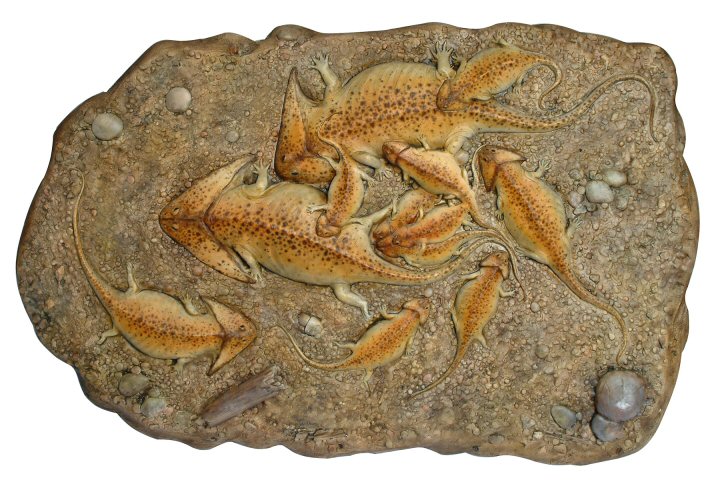
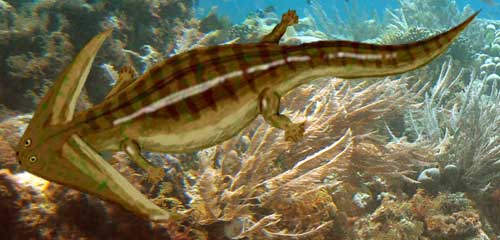

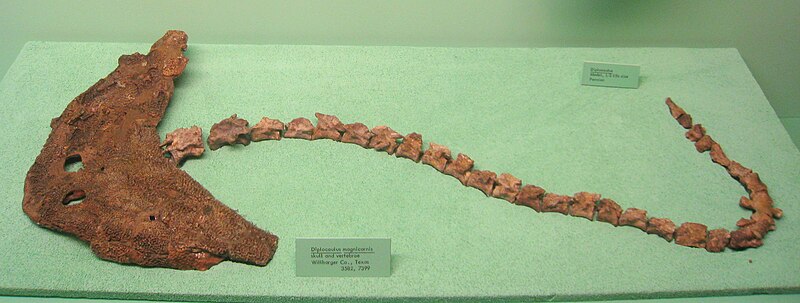

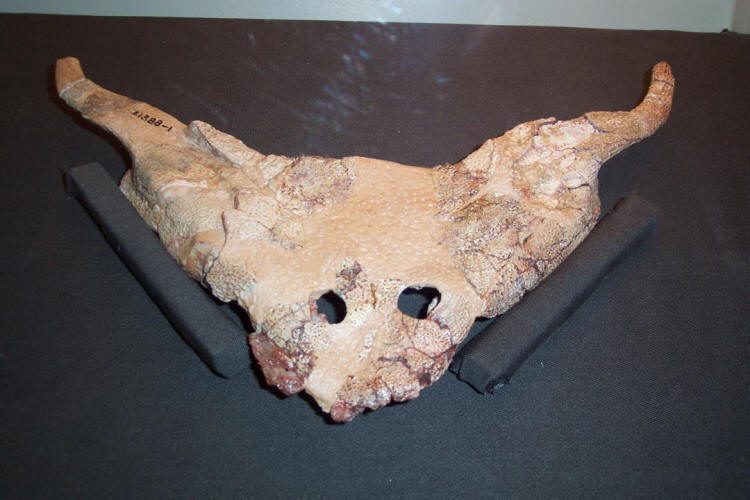



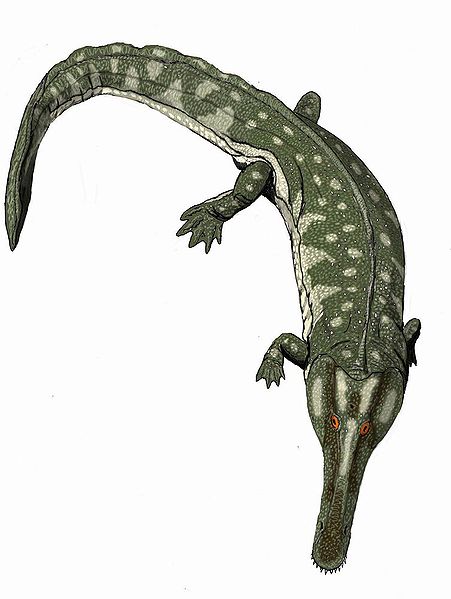


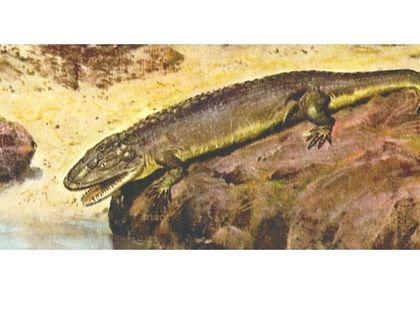

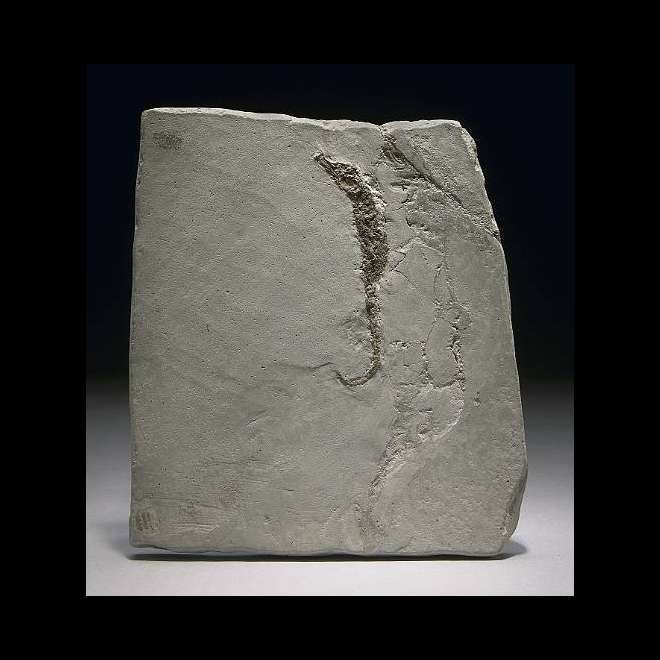


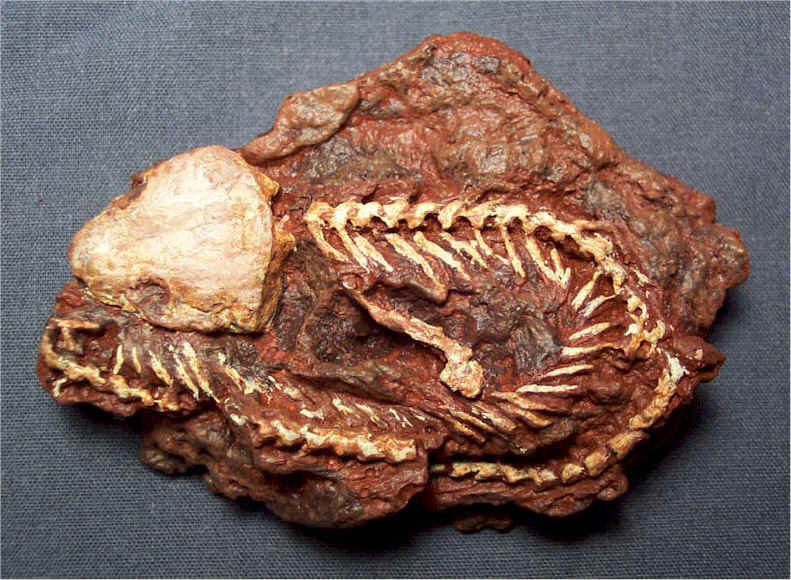

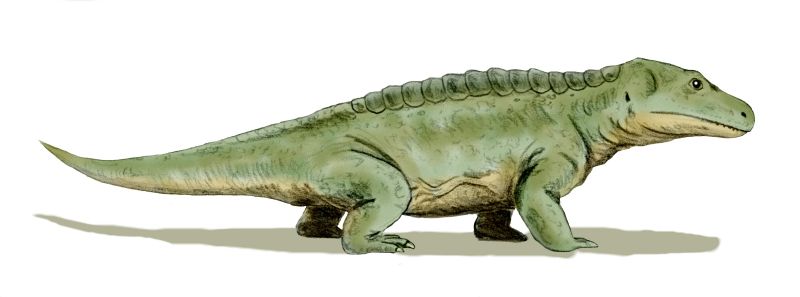

















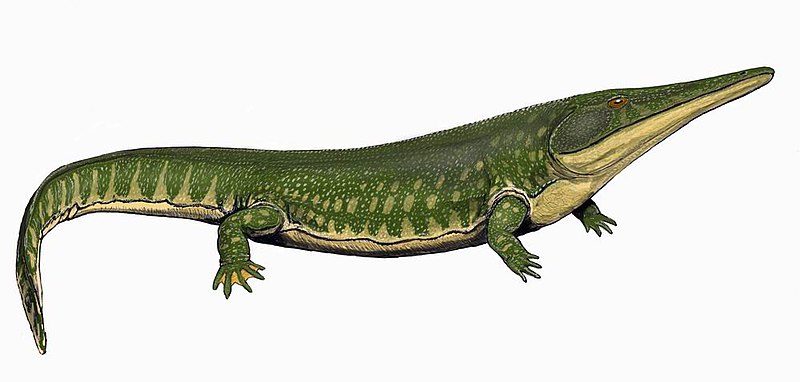


/Archego_1.jpg)

